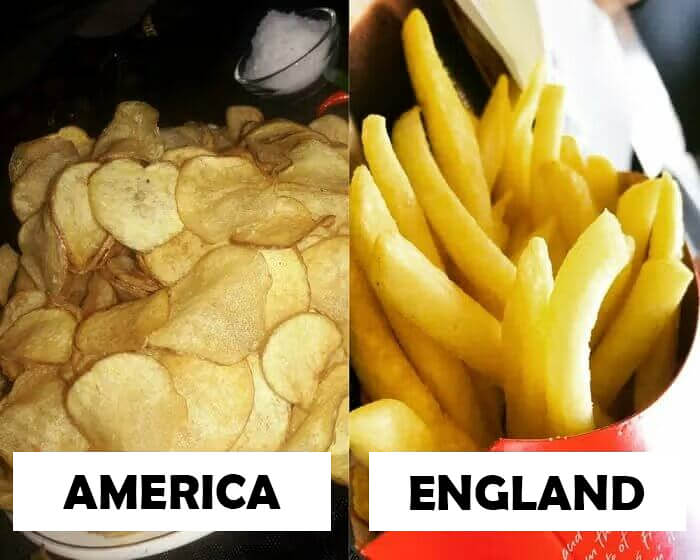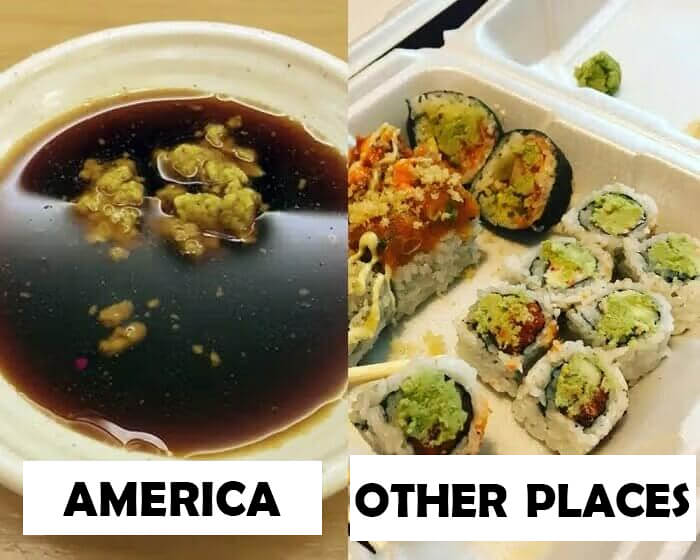Popular American Foods That Are Served Differently Everywhere Else
Cream Cheese in Sushi? Not in Japan
Sushi has really surged in popularity in recent years, becoming one of the go-to foods for many people. This dish has deep roots in Japanese cuisine, dating back to the early 1800s, particularly in the Tokyo area, where it was created using traditional ingredients like rice and raw fish.
However, sushi has evolved significantly, especially in the U.S. and around the world. You can now find sushi rolls filled with avocado, cream cheese, or even without any meat at all! Some creative takes even infuse flavors from Indian or Mexican cuisine, showcasing just how versatile sushi can be.
In the United States, people have really transformed the concept of sushi into something entirely new, blending it with various culinary influences. This adaptation reflects a broader trend of culinary fusion, where traditional dishes are reinvented to appeal to different tastes and preferences. It’s a fun way to experience the essence of sushi while enjoying a diverse array of flavors!

Americans Made Some Changes to This Vietnamese Dish
The diverse mix of cultures in the U.S. has created a rich culinary landscape, with countless dishes inspired by various cuisines. One standout is banh mi, a Vietnamese sandwich that has gained immense popularity here. In America, we’ve made some adaptations—often adding more pork and reducing the amount of parsley to suit local tastes.
While the American version of banh mi is delicious, the traditional Vietnamese sandwich has a fresh and vibrant look, often packed with colorful vegetables and herbs. It really highlights a balance of flavors and textures.
Sometimes, less meat and more veggies can make a meal feel lighter and more refreshing, and that’s where the Vietnamese version shines. Both sandwiches are wonderful in their own ways, showcasing how a dish can evolve while still honoring its roots!

British Pigs in a Blanket Are Wrapped in Bacon
If you’re not a vegetarian, you’ve likely enjoyed pigs in a blanket at a party or get-together! In the U.S., these tasty bites typically consist of mini hot dogs or sausages wrapped in bacon and often encased in a doughy coating. They’re always a hit and make for a perfect snack.
However, there’s a fun twist when you look at the British version of this dish. In the UK, pigs in a blanket don’t come with any dough; instead, they feature just the bacon wrapped around the sausage. This gives them a different texture and flavor, focusing more on the savory goodness of the bacon itself.
It’s a great example of how a familiar dish can take on different forms in different cultures, each with its own unique appeal!

Bacon in Britain Versus the US
You might assume that bacon is pretty universal, but that’s not quite the case! The bacon most Americans know and love is quite different from what you’ll find in Britain. In the U.S., bacon is typically thin, crispy, and has a distinct flavor that many people crave.
In contrast, British bacon is usually thicker and meatier, often resembling more of a cut of pork rather than the crispy strips Americans are used to. It doesn’t always get fried the same way, which can make it seem almost unrecognizable if you’re expecting classic American bacon.
So, while both versions share the name “bacon,” they really offer different experiences. It’s a great example of how the same food can vary significantly in preparation and presentation depending on where you are!

Where French Fries Are Called Chips
It’s fascinating how many dishes in the U.S. and the UK have similarities and differences, often stemming from their shared cultural history. But sometimes, the biggest confusion comes from the words we use! For example, in the UK, what Americans call “French fries” are referred to as “chips.” Meanwhile, in the U.S., the term “chips” usually refers to crispy snacks, like potato chips.
It does seem a bit odd that we call them “French fries,” especially considering they’re not actually from France! The term might come from the way the potatoes are prepared, but calling them “chips” definitely makes more sense since that’s what they essentially are. Language can really shape our understanding of food, and these differences highlight just how unique our culinary vocabularies can be!

They Eat the Wasabi Straight in Japan
There’s a notable difference in how sushi is enjoyed in the U.S. compared to Japan, especially when it comes to wasabi and ginger. In the U.S., these condiments are typically served on the side, allowing diners to add them according to their taste. You can decide how much heat you want, or even skip them altogether if you prefer.
In contrast, in Japan, wasabi is often placed directly on top of the sushi, giving each piece an added kick right from the start. This means that every bite you take is packed with flavor, and it’s an essential part of the experience.
It’s also important to note that in Japan, you shouldn’t wait until the end of your meal to use the wasabi. It’s meant to enhance the flavor of each piece as you go, so it’s best to enjoy it right away. This difference really highlights how cultural practices can shape the way we experience food!

Cinnamon Rolls Actually Come From Sweden
It’s interesting to note that American cinnamon rolls have their roots in a Swedish treat called kanelbullar! While both desserts share some core ingredients, there are definitely some key differences that give each its unique character.
Both cinnamon rolls use a similar dough, along with cinnamon and frosting, but the way they’re prepared and presented sets them apart. Swedish kanelbullar are shaped into a knot-like form, giving them a distinct look. Plus, they usually have much less sugar on top compared to their American counterparts, which often feature generous blobs of sweet frosting dripping down the sides.
So, while they may seem quite similar at first, the variations in shape and sweetness highlight the cultural twists that can come from adapting a beloved dish. It’s a fun example of how food evolves while still paying homage to its origins!

Facebook/Eagle Brand Sweetened Condensed Milk
American Tacos Are Not the Same as in Mexico
Mexican food in the United States is quite different from what you’d find in Mexico, and that’s why we often refer to it as Tex-Mex. While both cuisines share some similar ideas and ingredients, American versions have been influenced by local tastes and culture.
This is especially clear when it comes to tacos. In authentic Mexican tacos, the meats and cheeses are typically fresh and made from high-quality ingredients, rather than the mass-produced and processed options you might find in American tacos. Even though it might seem like a small difference, it really impacts the flavor and overall experience of the dish.
So, while both versions are delicious in their own right, the freshness of traditional Mexican tacos really sets them apart. It’s a great example of how food can adapt and change while still holding onto its roots!

What Is a Sandwich Around the World?
Sandwiches come in so many varieties around the world, and it’s fascinating to explore them all! In the U.S., sandwiches often feature thinly sliced meats and cheeses, with options like mustard or mayonnaise to add flavor. Many places even let you customize your own sandwich, making it a fun and personal meal choice.
However, if you travel to the Middle East, you’ll find a different take on sandwiches altogether. Instead of the classic American style, you’re more likely to encounter pita bread filled with delicious meats or chickpea balls, like falafel. These sandwiches are quite different from the Subway-style subs we’re used to in the U.S., showcasing unique flavors and ingredients.
It’s amazing how a simple concept like a sandwich can change so much depending on where you are. Each region has its own culinary twist, making sandwiches a truly global food!


